Town Cancels
The first part of describing town cancels is to make sure the post office table is part of the database. Please click here for instructions about how to do this.
Use the post like this:
Select the post office and county of the post office you will describe and copy the selected data.
Go to a new record and select the entire record. The record is selected when the bar at left changes to a dark color.
Paste the copied post office data in the form. Now you can begind describing the cover.
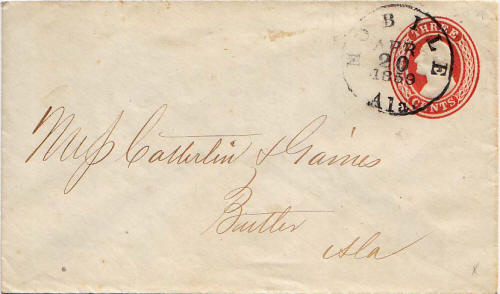
Mobile 1859 serifed year dated cds 3c Washington Nesbitt Paper Envelope.
1) Start with the town name. Do not include the state unless it is a describable machine cancel.
2) Next is the date of the cover. Take the date from the origin cancel. Sometimes, the date is not in the cancel or is in the cancel but cannot be read. When this happens, get a date from receiving or transit market, docketing or contetnts. You must always come up with a date. If all this fails you must make up a date. When you make up a date, use a small c before the date with no space like c1885. The c stands for circa. If the cover is franked with a commemorative stamp, make the circa date one date after the stamp was issued. If the stamp was issued in 1934, use c1935. If the cover is franked with a definitive stamp, make the circa date about halfway between the date the stamp was issued and the date the next definitive stamp was issued. If the stamp was issued in 1922, and the next definitive stamp was issued in 1938 use c1930. You can use rate knowledge for a more accurate guess for the year date. Unless you have specific rate knowledge that can more accurately pinpoint the date of a cover, it is better to use a date in 5 year intervals, like c1930 and c1945. This helps identify that the date is imprecise. Please never use the year of issue of any part of the franking for a circa date.
3) Describe the postal marking. Please click here to see some of the types of cancels.
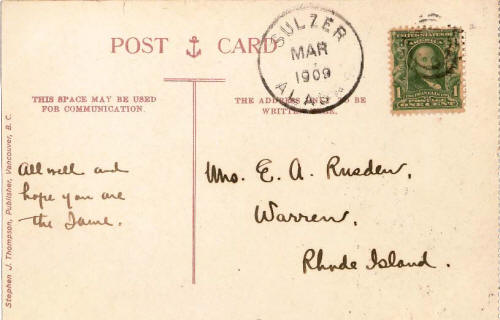
Sulzer 1909 target Type 1 1901-1933 PC.
4) Some states and types of covers have markings that are exhaustively cataloged. If there is a catalog, after the description of the marking indicate the type pf the markings
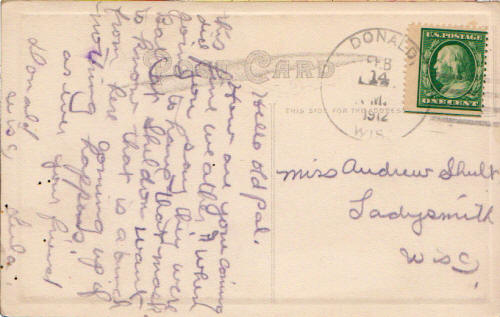
Donald 1912 4a-bar 1904-1942 PC.
5) List the dates of operation if the office is discontinued.
6) Describe the type of cover or the postal history if approriate.
a) The assumption that all town cancels are on cover with common franking from the the period.
b) Note the exceptions - PC if it is picture postcard, Postal Stationery Envelope or Postal Card.
c) The postal history can be the franking or the franking and usage.

Helena 1854 serifed cds 3c Washington 1851 Issue.

So. Ca. R.R. c1875 blue 336-E-1 1c Brown Liberty Postal Card Spindle holes.
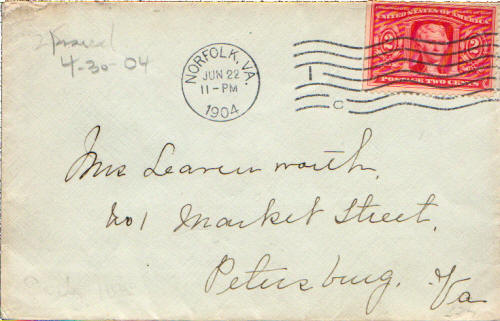
Norfolk 1904 machine 2c Louisiana Purchase.
d) For frankings on a simple domestic, without any special service, describe the the franking if the cover is franked with any definitive stamp before 1890, with a postal stationery envelope before 1870, with a #UX1 or #UX3 or #UX3 postal card. Describe commemortive stamps issued before 1930.
e) Postal history that is to be described include multiple weight letters, foreign destinations, registered, special delivery, postage due, forwarding and auxilary markings.
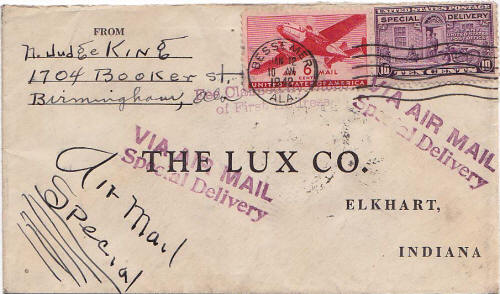
Bessemer 1942 machine 6c Transport and 10c Motorcycle Messenger Special Delivery.
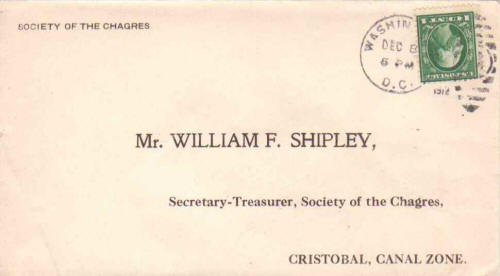
Washington 1912 numeral duplex 1c Washington Franklin Printed matter to Canal Zone Corner card Society of the Chagres.

Atlanta & B'Ham 1904 366-E-2 2c Washington Shield PPC (Coons In a Cotton Shed) to Scotland Crease at right.

Buckroe Beach 1912 4a-bar 1c Washington Franklin (2) PPC to Vienna, Austria. Franked view side.

